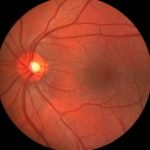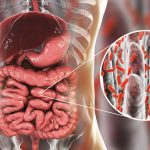The Importance of Gut Health- Part 1
JAMES SENSENIG, ND
This column is transcribed from a weekly live conversation produced by the Naturopathic Medical Institute (NMI). The goal of NMI is to preserve and promote the principles of naturopathic philosophy through clinical application, in your offices and in your communities, every day. On October 11, 2017, Dr Jim Sensenig spoke on the importance of gut health. In this lightly edited transcript (by Emily Kane, ND), the first part of a 4-part article, Dr Sensenig addresses the question, “What’s the Gut Got to Do With It?”
A Longstanding Appreciation
The more scientific research we have available, the more we are reminded of just how far ahead of the curve our predecessors were with naturopathic medicine. They had a deep and fundamental understanding of today’s subject – the importance of gut health – long before the topic was at the forefront of human biology, as it is today. Our naturopathic forebears, the eclectic physicians, could articulate very clearly the importance of GI health, although not with the cellular and molecular and genetic detail that we have today.
This raises an interesting question: Does the increased detail make that knowledge any more or less valid? I will argue that the very principles of self-healing, right living, and needing to clear toxins aren’t changed particularly by drilling down at a genetic or cellular level. It is interesting that there are naturopathic modalities we apply in practice today that eventually can be explained in some kind of reductionistic, scientific way. What I’m asking is, are we all more comfortable when “science” explains, in a reductionistic way, how something “works”?
Some examples might be acupuncture or homeopathy. People have said, “This stuff is voodoo; it doesn’t work, and it’s all placebo.” When the conventional world figures out how to explain it in reductionistic terms, within a mechanistic, Newtonian framework, then suddenly it’s okay. In fact, these “alternative therapies” may even be presented as a new discovery, even though the principles had often been established since before recorded history.
It is remarkable just how articulate and clinically valid our predecessors were in laying down what they taught us about the importance of the gut and its role in our overall health. In the early days of vitalistic, naturopathic medicine, we did not talk about gastroenterology or clinical nutrition, because these are not, in fact, separable. They are 2 sides of the same coin.
The term for this field, from at least 100 years ago, was trophology, the science of feeding. The study was looking at how the avocado, for instance, goes from being an avocado in your salad to the point where the individual components of that avocado reach your cells.
The “gut” brings nutrients into the body and eliminates waste, but it is far more than just a digestive system. It is the most active immunological location in the body, producing systemic enzymes and the bulk of our neurotransmitters, and maintaining the “soil” of our internal environment. The alimentary canal not only nourishes us, but also defends us, heals us, and affects our moods. With more neurons than in our brain, and 10 times more bacteria than cells in our body, the “gut” is the center of our physical universe.
Review of the Alimentary Canal
The alimentary canal is specifically modified in higher animals and humans to extract nutrients from our environment. There are some who suggest that one ought to think of the intestinal tract as being exterior to the body: “That which is on the inside of the outside is still on the outside of the inside.” The alimentary canal is designed to break down food from the teeth to the other end, to mix it chemically in different ways with emulsifiers, digestants, enzymes, etc.
Food not only provides nutrients; it also introduces whatever else is in the environment at the time, which includes the multitudes of microorganisms to which we are exposed. It is estimated that 90% of our exposure to microorganisms occurs within the gut. Some experts have estimated that the surface area of the small intestine alone is over 200 times that of our skin.1 This is illustrative of the fact that the more surface area there is, the more exposure there is to microorganisms.
The mechanics of the gut include chewing, grinding, and mixing of the food in the mouth, which then moves through the esophagus into the stomach, where a changing pH in response to the secreted hydrochloric acid changes pepsinogen into pepsin, allowing for digestion of proteins.
The bolus of soupy food then moves further into the small intestines, where the bulk of absorption takes place, and finally into the large intestine for resorption of water and bile.
Without normal function of the alimentary canal, we cannot absorb our nutrients. And whatever is not used, including the waste products dumped by liver detoxification activity, ends up going out the “tail pipe.”
Stomach Acid
We are living at a time when digestive problems are a huge issue. Many, many people have gas, bloating, diarrhea, constipation, etc, and many patients suffer from inflammatory bowel disease. And the gastroenterology approach to most of these issues is to block the acids.
The low pH of the stomach is the signal for closing the cardiac sphincter and keeping the pyloric sphincter closed. It is only when the pH changes again towards pH-neutral that the pyloric sphincter can open. In the stomach you get protein digestion from HCl, and as the bolus of food moves into the duodenum, the liver, gall bladder, and the pancreas secrete compounds and enzymes that emulsify the fats and break down the carbohydrates.
Gastrointestinal pH is more than just about digestion; it is vitally important for the absorption of certain nutrients, especially the minerals. Some minerals are more sensitive to pH than others. For instance, calcium, magnesium, zinc, chromium, and manganese seem to be particularly touchy when it comes to pH. If you do mineral analysis on people, you can often suspect hypochlorhydria (or achlorhydria, for that matter) because of the pattern of mineral deficiencies that might come up. Further, if you don’t have the right conditions, you cannot grow the right bacteria in the alimentary canal. Without the right pH, you are not going to get the right microbes in the right proportions in the right parts of the gut.
Take the issue of Helicobacter pylori, which is found more commonly in people who have hypochlorhydria. Is it possible that H pylori is causing some kind of an acid decrease, or is it the other way around? Taking stomach acid blockers – rampant in the United States – may exacerbate the colonization of H pylori in the stomach because the conditions for its growth are now optimized.
Digestive Enzymes
Digestive enzymes are so much more than compounds that expedite digestion. They are anti-inflammatory and proteolytic outside of the alimentary canal. Proteolytic enzymes can be used for inflammatory conditions such as sports injuries because they break down damaged tissue – which is comprised of proteins.
Digestive enzymes are the body’s scavengers. The proteolytic enzymes that are in the bloodstream – either loose or contained within white cells – are circulating, gobbling up, breaking down, and digesting abnormal or damaged proteins. Anybody who has used proteolytic enzymes in soft tissue injuries will know that it can speed up the healing by essentially cleaning up the injury site of hemolysis and injured, dead, and dying tissue. It is kind of like taking out the garbage before you can rebuild on the same site.
Enzymes also break down pathogens. Beard’s trophoblast theory of cancer2 suggests that one of the roles of our digestive enzymes is to digest, or break down, malignant cells, particularly carcinomas of various kinds. One of the benefits of a more vegan/vegetarian diet is simply its ability to spare our limited enzyme-synthesis capacity. Also, eating some raw food daily is optimal, because the inherent enzymes are not destroyed in the cooking. Maybe that’s why vegetarians traditionally have lived longer or have been healthier in some cultures. However, this may no longer be true due to the depletion of minerals in our soils these days.
Bacteria
In addition to stomach acid and the enzymes, we have multitudes of microbes living in our gut. Bacteria help in our digestive process by not only helping to break down some foodstuffs, but also by helping to make, or liberate, nutrients like some of the B vitamins and amino acids. Bacteria aid in our mucosal immunity. They are directly related to IgA production and actually stimulate IgA production in the various immune tissues in the gut – referred to as the gut-associated lymphoid tissue, or GALT. Bacteria provide defenses in that, in a simple way of thinking about it, the good guys prevent the bad guys from taking over. The beneficial bacteria keep pathogens and other pathogenic bacteria at bay. Clostridium difficile is becoming a serious problem in America’s hospitals. The only conventional treatment here is super-biotics or fecal transplant. Patients with normal intestinal bacteria are less susceptible to C diff, and another factor is stomach acid. It is speculated that the rise in C diff follows the rise in the use of PPIs, since, as we block or diminish the pH in the stomach, we obviously change the environment away from the beneficial bacteria in the direction of the bad guys. This is too often missed in talks about digestion.
The pH/bacterial connection is absolutely astounding. A question to consider: How come a dog can eat out of the neighbor’s garbage and live to tell, but you eat a slightly bad avocado and get sick? Often the reason has to do with your gastric pH. The ambient pH of the stomach is about 2, and it is even lower when it is functioning to digest proteins.
The pH of the rest of the gut remains acidic, but gradually goes to near-neutral at the tailpipe. The pH environment acts as a biological sieve or gate. The beneficial bacteria prefer an acid environment. That is why they are called “acidophilus.” The bad guys – the pathogenic bacteria, yeast, mold, fungi, and, to some extent, parasites – are able to live in or prefer an environment that is more alkaline. In the case of the dog – or, for that matter, the lion or tiger or bear or all other critters that are eating food off the ground and out of the stream – they all have digestive systems that are strong enough that the pH is low enough to kill off the pathogenic bacteria but allow the beneficial or commensal bacteria to remain. Bacteria are also involved in detoxification. Each different species has its own detox assignment. It is estimated that 2 to 3 pounds of our body weight is microorganisms. That’s a lot of bacteria! There are hundreds of millions of bacteria in our bodies, and it’s estimated that there are over 1000 different species.
As I mentioned, bacteria also produce nutrients. All of the known neurotransmitters, most famously serotonin and dopamine, are actually elaborated in the gut. Ninety-five percent of serotonin is made in the gut. If you do not have a normally functioning GI tract with a normal level of bacteria, a normal population of commensal bacteria, and a normal pH, you are not going to be breaking down the proteins or the vital peptides into the precursors for the neurotransmitters.
This column, based on the Vital Conversations of the Naturopathic Medicine Institute, will continue in next month’s NDNR. Dr Sensenig will be discussing the gut as a second brain.
References:
- Challacombe SJ. Assessing mucosal humoral immunity. Clin Exp Immunol. 1995;100:181-182.
- Ross CA. The trophoblast model of cancer. Nutr Cancer. 2015;67(1):61-67.

James Sensenig, ND was a 1978 graduate of NCNM in Portland, OR. For over 40 years he maintained an eclectic practice in Hamden, CT. Over the years, Dr Sensenig held prominent positions in the various naturopathic colleges and the AANP. A champion of classical naturopathic medicine, Dr Sensenig received an Honorary Doctor of Naturopathic Philosophy degree from CCNM, and received numerous awards for his dedication to teaching the principles of naturopathic medicine.










